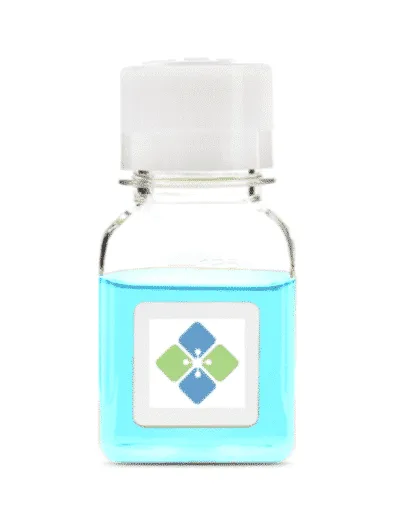Polystyrene Particles with Carboxyl Groups (50 nm)
CAT:
952-B2013413
Size:
2 mL
Price:
Ask
- Availability: 24/48H Stock Items & 2 to 6 Weeks non Stock Items.
- Dry Ice Shipment: No








Polystyrene Particles with Carboxyl Groups (50 nm)
Description:
Polystyrene Particles with Carboxyl Groups (50 nm)_x000D_ Catalog number: B2013413_x000D_ Lot number: Batch Dependent_x000D_ Expiration Date: Batch dependent_x000D_ Amount: 2 ml_x000D_ Molecular Weight or Concentration: 1%_x000D_ Supplied as: Suspension_x000D_ Applications: molecular tool for various biochemical applications_x000D_ Storage: 2-8 °C_x000D_ Keywords: Polystyrene beads_x000D_ Grade: Biotechnology grade. All products are highly pure. All solutions are made with Type I ultrapure water (resistivity >18 MΩ-cm) and are filtered through 0.22 um._x000D_ _x000D_ References:_x000D_ 1: Riley KR, Liu S, Yu G, Libby K, Cubicciotti R, Colyer CL. Using capillary electrophoresis to characterize polymeric particles J Chromatogr A. 2016 Sep 9;1463:169-75._x000D_ 2: Schiller JL, Fogle MM, Bussey O, Kissner WJ, Hill DB, Lai SK. Antibody-mediated trapping in biological hydrogels is governed by sugar-sugar hydrogen bonds Acta Biomater. 2020 Apr 15;107:91-101._x000D_ 3: Dong Y, Gao M, Song Z, Qiu W. As(III) adsorption onto different-sized polystyrene microplastic particles and its mechanism Chemosphere. 2020 Jan;239:124792._x000D_ 4: Fukui S, Hirai T, Nakamura Y, Fujii S. pH-Dependent Foam Formation Using Amphoteric Colloidal Polymer Particles Polymers (Basel). 2020 Feb 27;12(3):511._x000D_ 5: Mangeney C, Fertani M, Bousalem S, Zhicai M, Ammar S, Herbst F, Beaunier P, Elaissari A, Chehimi MM. Magnetic Fe2O3-polystyrene/PPy core/shell particles: bioreactivity and self-assembly Langmuir. 2007 Oct 23;23(22):10940-9._x000D_ 6: Nicolini AM, Toth TD, Yoon JY. Tuneable nanoparticle-nanofiber composite substrate for improved cellular adhesion Colloids Surf B Biointerfaces. 2016 Sep 1;145:830-838._x000D_ 7: Romero-Cano MS, MartÃn-RodrÃguez A, de las Nieves FJ. Adsorption and Desorption of Triton X-100 in Polystyrene Particles with Different Functionality J Colloid Interface Sci. 2000 Jul 15;227(2):322-328._x000D_ 8: Musyanovych A, Rossmanith R, Tontsch C, Landfester K. Effect of hydrophilic comonomer and surfactant type on the colloidal stability and size distribution of carboxyl- and amino-functionalized polystyrene particles prepared by miniemulsion polymerization Langmuir. 2007 May 8;23(10):5367-76._x000D_ 9: Lee YK, Hur J. Adsorption of microplastic-derived organic matter onto minerals Water Res. 2020 Dec 15;187:116426._x000D_ 10: Meides N, Menzel T, Poetzschner B, Löder MGJ, Mansfeld U, Strohriegl P, Altstaedt V, Senker J. Reconstructing the Environmental Degradation of Polystyrene by Accelerated Weathering Environ Sci Technol. 2021 Jun 15;55(12):7930-7938. _x000D_ _x000D_ Products Related to Polystyrene Particles with Carboxyl Groups (50 nm) can be found at ChemicalsShort Description:
Catalog Number: B2013413 (2 ml)_x000D_ Polystyrene Particles with Carboxyl Groups (50 nm) is a high quality Polystyrene beads with carboxyl functional groups. This product has been used as molecular tool for various biochemical applications. It has also been used in a wide array of other chemical and immunological applications. Custom bulk amounts of this product are available upon request._x000D_ _x000D_Weight:
0.15Length:
2Width:
0.5Height :
0.5